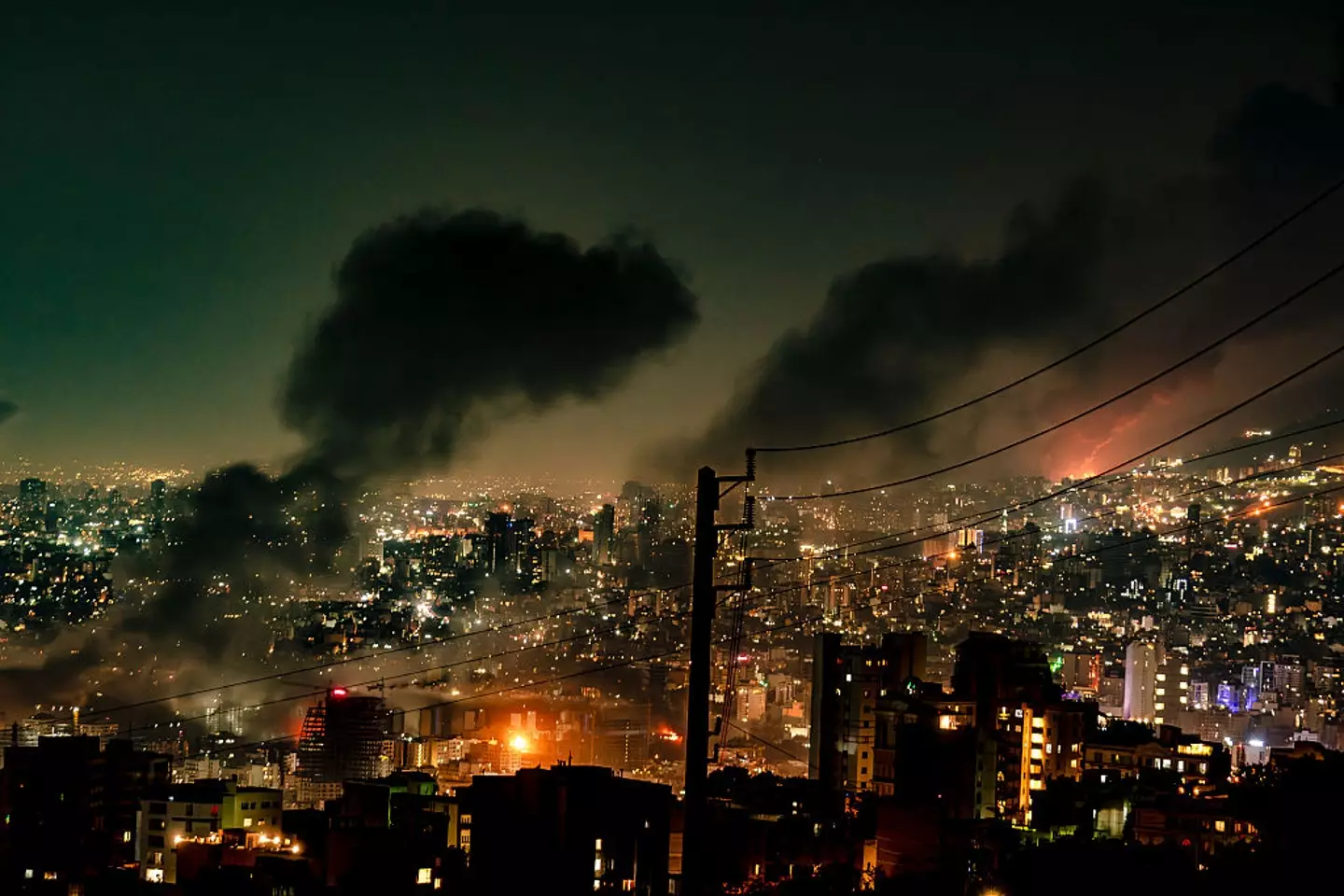The US has carried out air strikes on three advanced nuclear sites in Iran, as Iranian officials condemn the attack and warn President Donald Trump his actions will have ‘everlasting consequences’.
At 7.50pm (Eastern Time) yesterday evening (June 21), the 79-year-old took to Truth Social to announce that America had completed a ‘very successful attack on the three Nuclear sites in Iran, including Fordow, Natanz, and Esfahan’ – which would have been 3.20am today (local time).
In his address to the nation, the Republican explained how the US bombed those three nuclear sites, describing them as part of Iran’s ‘horribly destructive enterprise’.
“Our objective was the destruction of Iran’s nuclear enrichment capacity and a stop to the nuclear threat posed by the world’s number one state sponsor of terror. Tonight, I can report to the world that the strikes were a spectacular military success,” the POTUS said.
“Iran’s key nuclear enrichment facilities have been completely and totally obliterated. Iran, the bully of the Middle East, must now make peace – if they do not, future attacks will be far greater and a lot easier.”
However, according to the International Atomic Energy Agency (IAEA), the UN’s nuclear watchdog, there has been ‘no increase in off-site radiation levels’ at the sites where the US launched its attacks – suggesting that the strikes didn’t do as much damage as Trump had hoped.
“IAEA will provide further assessments on situation in Iran as more information becomes available,” it said in a statement.
Seyed Abbas Araghchi, Iran’s foreign minister, took to Twitter following the attack to condemn the US’ actions while issuing a threat that America will face consequences over the decision to bomb its nuclear sites.
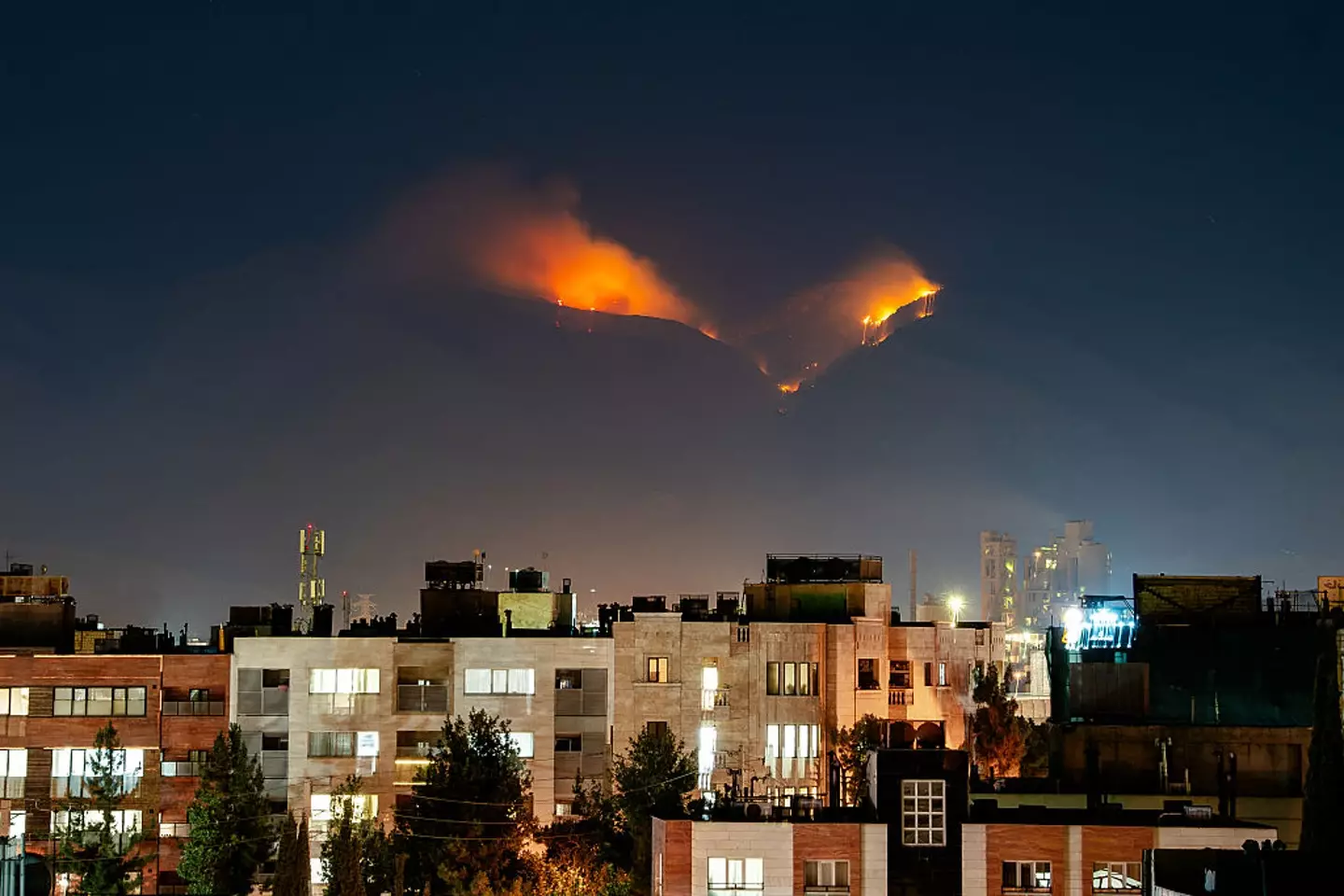

Smoke and flames can be seen at an alleged nuclear site in the mountains of Shiraz, Iran (HIROON/Middle East Images/AFP via Getty Images)
“The events this morning are outrageous and will have everlasting consequences. Each and every member of the UN must be alarmed over this extremely dangerous, lawless and criminal behavior,” he wrote in part.
It comes as three US stealth bombers were spotted flying out from military bases in the US in the past couple of days, heading towards Diego Garcia, a small island in the Indian Ocean that is used as a military base by the UK and US.
Iran and weapons-grade uranium
Iran has been accused of attempting to develop a nuclear warhead, mining large quantities of uranium before enriching it to 60 percent – with Iran having no purpose to enrich the material to such a high percentage.
For those unaware, natural uranium contains a percentage of roughly 0.7 percent of the isotope uranium-235, which on its own isn’t usable as fuel for nuclear reactors – and needs to be enriched to 3.5 percent by removing the isotope uranium-238.
However, as previously mentioned, Iran has been producing and storing enriched uranium at 60 percent on mass – which would mean it’s done most of the work needed to enrich it to weapon-grade uranium (WGU), which is typically deemed at 90 percent.
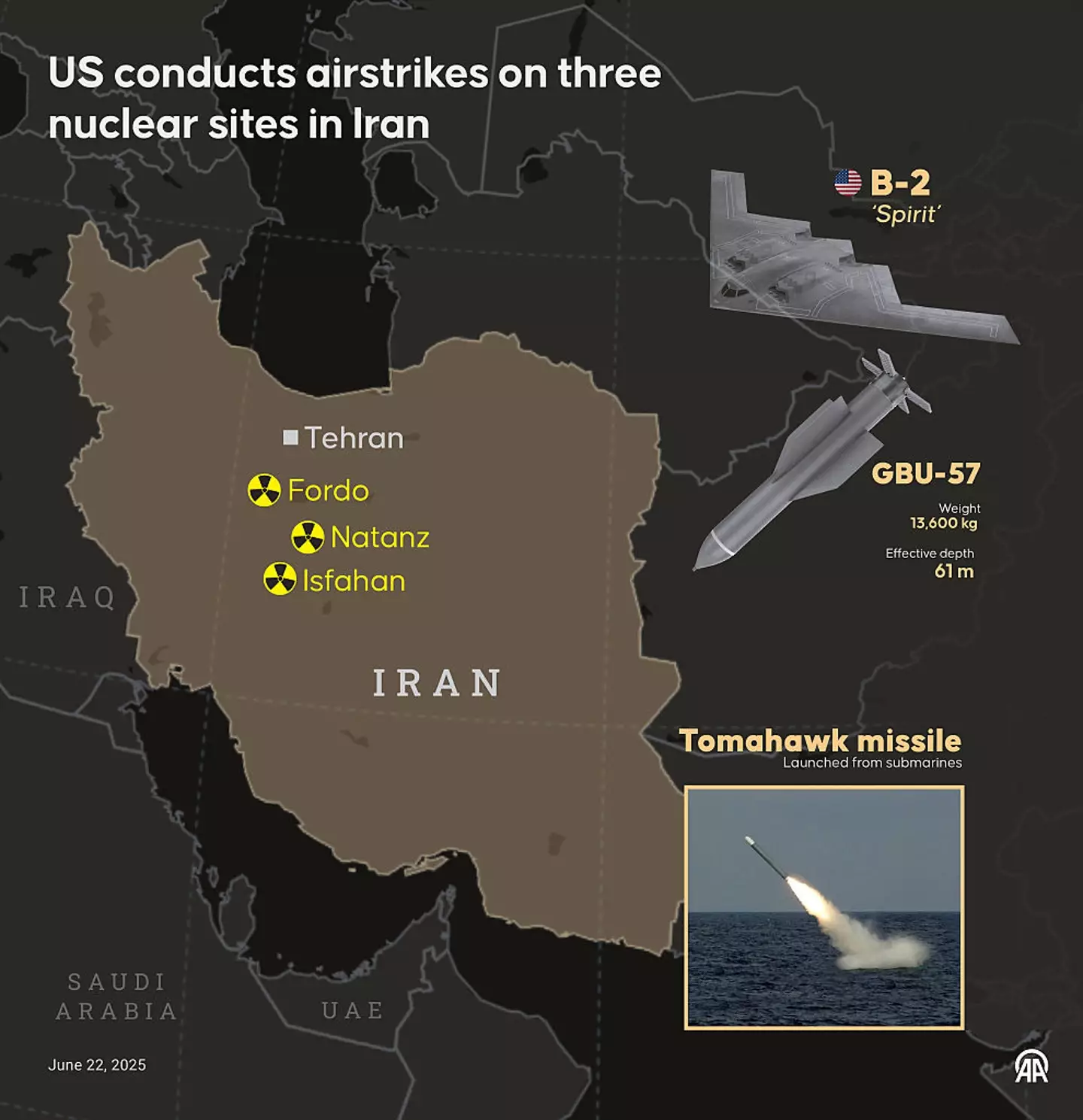

Infographic of the US’ bombing of Iran’s key nuclear sites (Murat Usubali/Anadolu via Getty Images)
How close is Iran to a nuclear weapon?
The Institute for Science and International Security, a non-profit watchdog, estimates that it has enough highly enriched uranium that it could create almost a dozen nuclear bombs in a month – if the uranium was enriched to 90 percent.
Its monitoring report issued on June 9 stated that one of Iran’s factories could produce weapons-grade uranium (WGU) in just days.
Chillingly, it read: “Iran could produce its first quantity of 25 kg of WGU in Fordow in as little as two to three days.
“Breaking out in both Fordow and the Natanz Fuel Enrichment Plant (FEP), the two facilities together could produce enough WGU for 11 nuclear weapons in the first month, enough for 15 nuclear weapons by the end of the second month, 19 by the end of the third month, 21 by the end of the fourth month, and 22 by the end of the fifth month.”
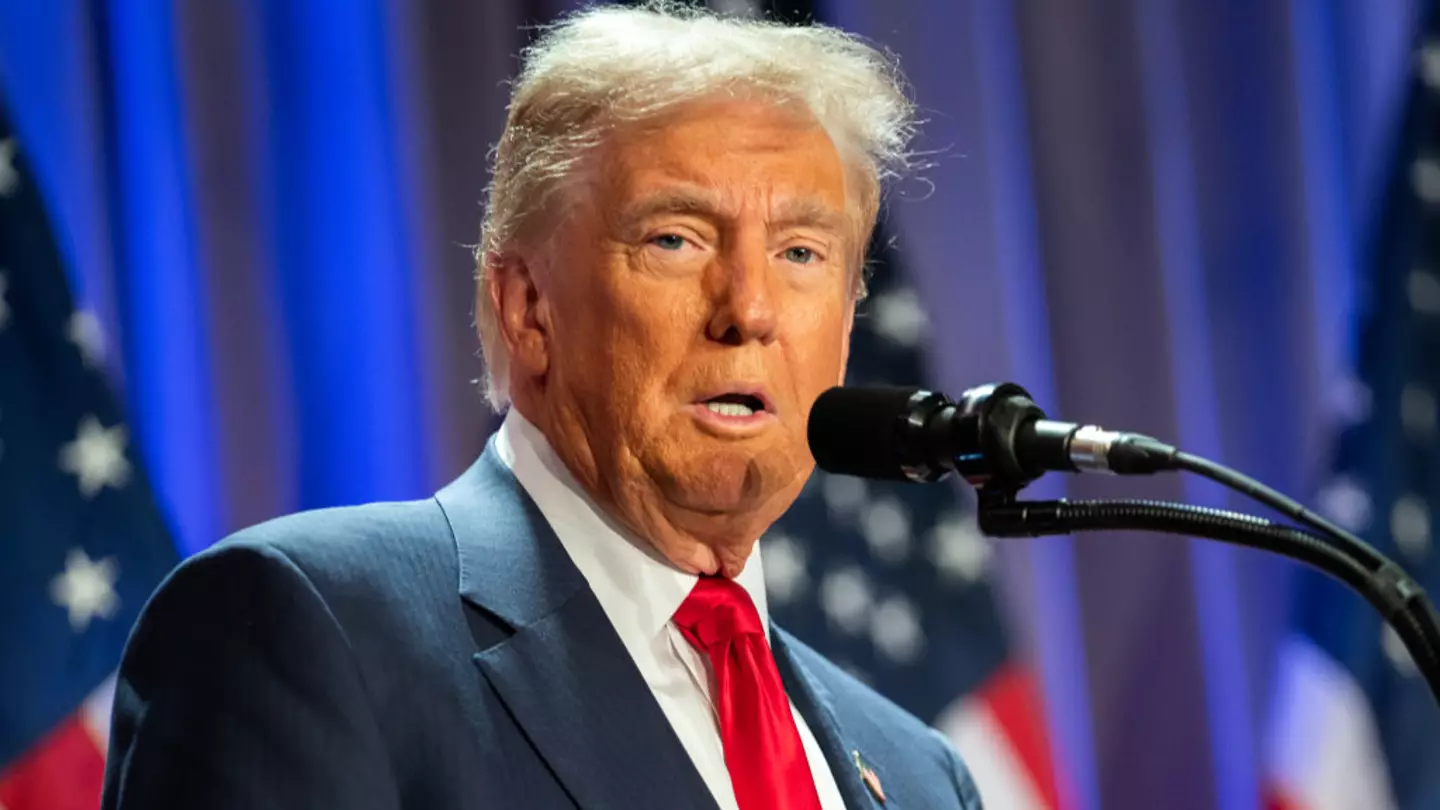

President Donald Trump has rallied behind Israel after news broke that it had bombed several nuclear sites across Iran, including its capital of Tehran.
The airstrikes came early this morning (June 13), with Israel revealing that it had used around 200 aircraft to send swarms of missiles towards roughly 100 targets – all understood to have been nuclear and missile sites.
In response, Iran fired over 100 drones at Israel – with both Iraq and Jordan confirming that they had flown over their airspace – as Israeli Defence Forces mentioned that they had been intercepting them. It remains uncertain whether any drones managed to pass through the country’s Iron Dome.
Trump has since confirmed that the US had no involvement in the strikes, although he did tell CNN that he believed the strikes were a ‘very successful attack’, adding that the US ‘supports Israel’.
The attacks come as the 78-year-old Republican has been pushing for Iran to sign a nuclear deal – something that we’ve heard a lot of talk about as of late, but as for what that involves… we’ve kind of been left in the lurch.
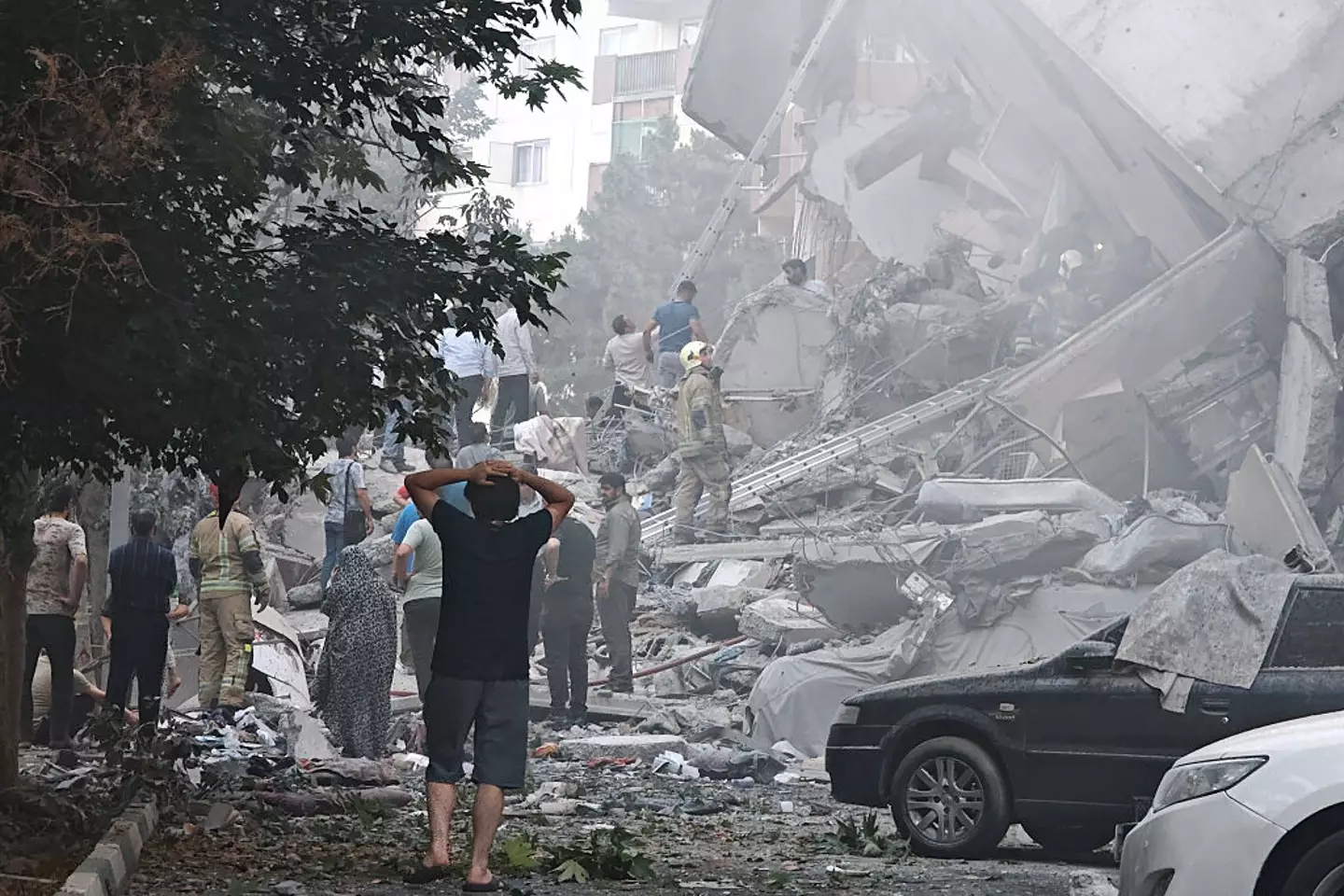

Damage to buildings in Nobonyad Square, Tehran, following Israeli airstrikes. Iran’s three top military generals were killed in the attacks that also targeted nuclear and military facilities (Majid Saeedi/Getty Images)
What is the Iran-nuclear deal
Simply put, if Iran agreed to a nuclear deal, it would mean the country would have to cease and desist with its nuclear development program – with world leaders worried that the Middle Eastern nation intends to create nuclear artillery for warfare.
The deal that Trump’s hoping for would also mean the ballistic missile program would be halted, as well as Iran’s involvement in regional conflicts.
In return for Iran axing it, the US and other leading nations would lift the sanctions placed on Iran – which has been an economic disaster for its natives, with Iran currently in a deep recession and has been since the sanctions were put in place.
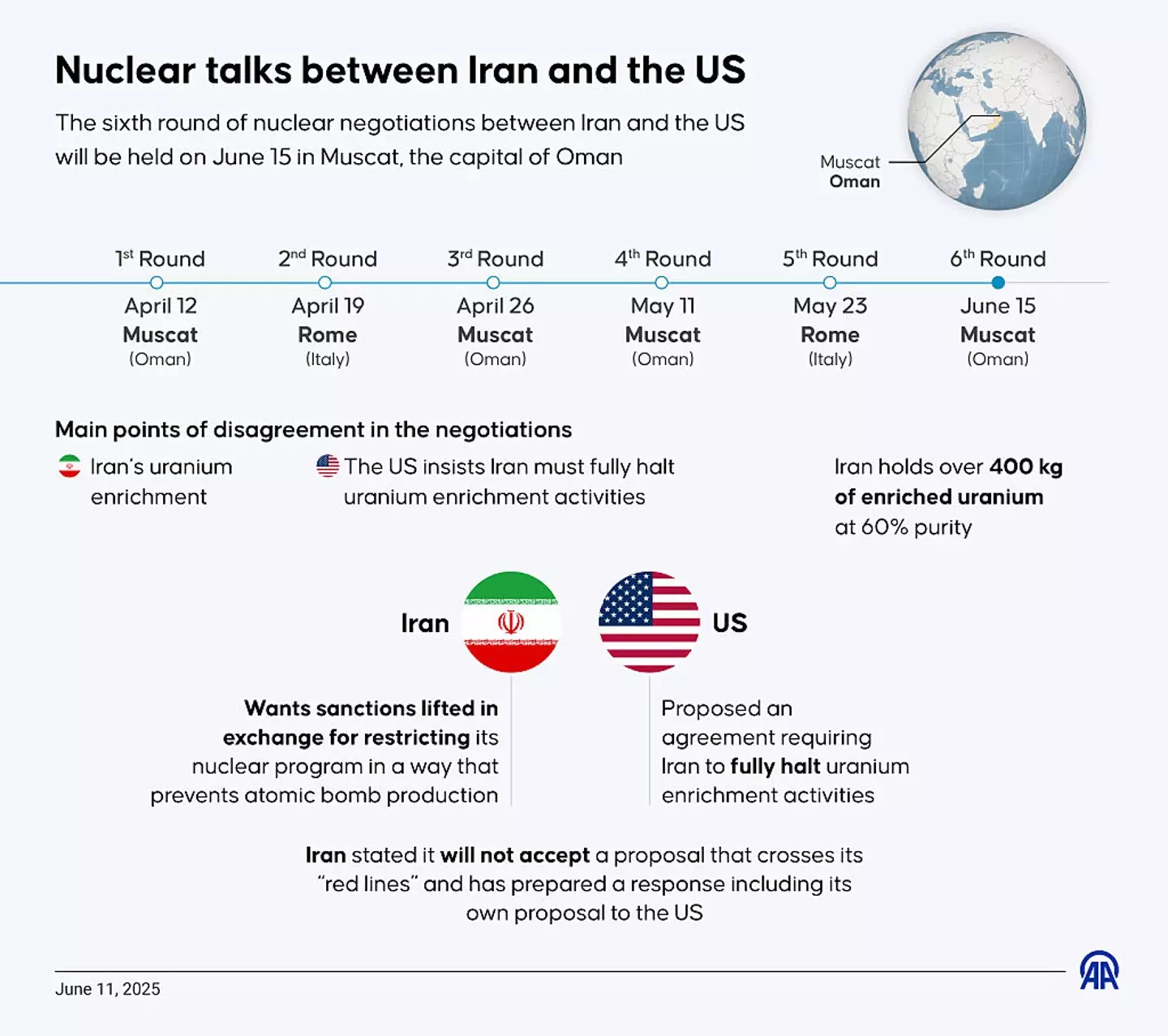

Detailed look at the nuclear talks between Iran and the US (Murat Usubali/Anadolu via Getty Images)
Who is involved in the Iran-nuclear deal
The nuclear deal involves Iran and a group of world powers known as the P5+1 – which includes the US, UK, Germany, France, China and Russia, who’ve all been in negotiation with Iran in regard to its nuclear program since 2006.
They’ve struck an agreement in the past known as the Joint Comprehensive Plan of Action (JCPOA), but it was disintegrated after Trump raised his concerns during his first term – we’ll get into that later.
While the deal involves the five members of the UN Security Council – UK, France, China, Russia and the US, as well as Germany. The European Union is also an interested party – so to are Saudi Arabia and Israel.
Israel claims the deal is too lenient and so chose not to pursue it, while the Kingdom of Saudi Arabia has met with Iranian officials in an attempt to talk them round – and has even offered to mediate any talks between the US and Iran.
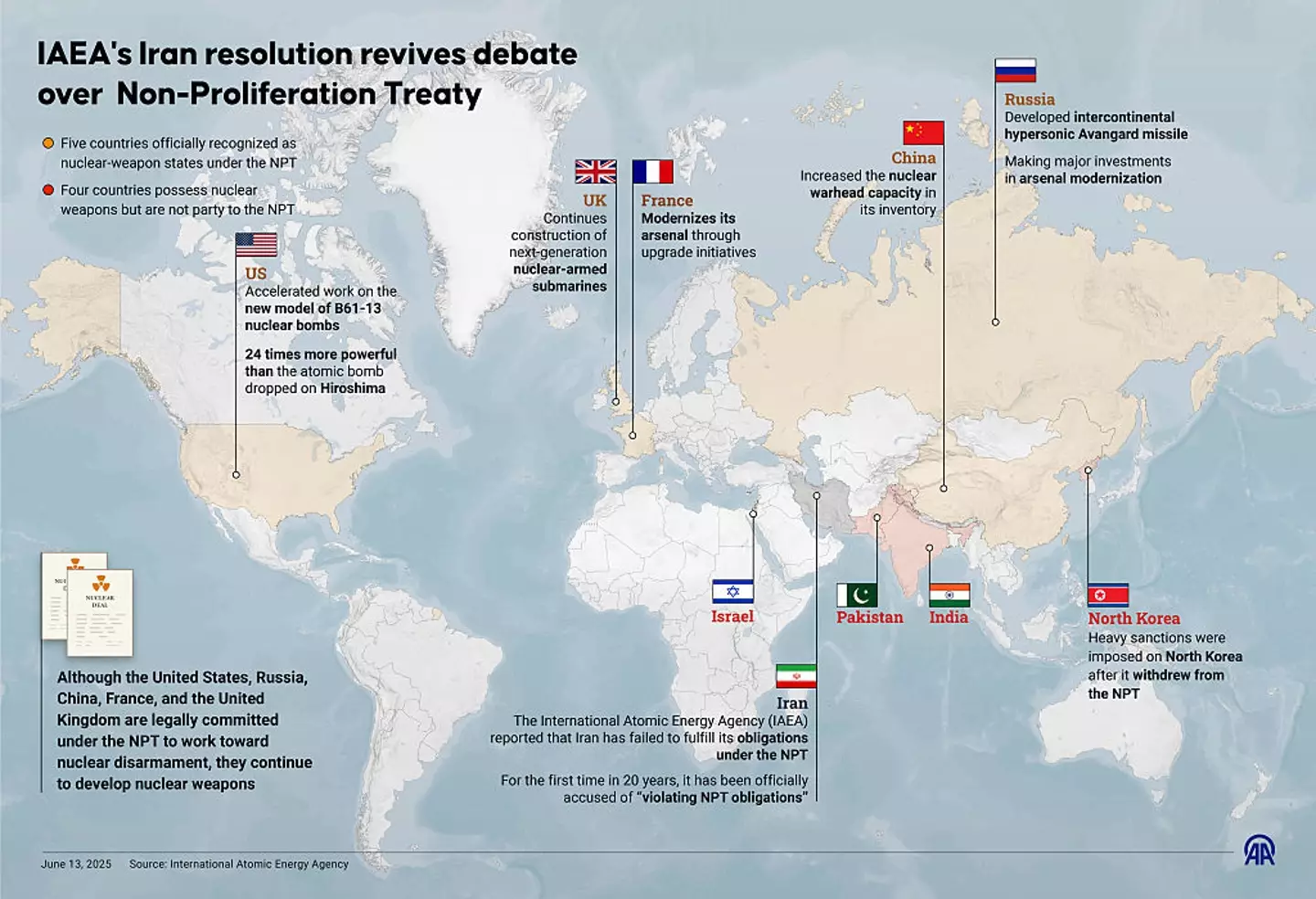

The nine countries which are known to have nuclear weapons, and the debate over who should be allowed a nuclear artillery (Muhammed Ali Yigit/Anadolu via Getty Images)
What Trump has warned Iran
“I gave Iran chance after chance to make a deal. I told them, in the strongest of words, to ‘just do it,’ but no matter how hard they tried, no matter how close they got, they just couldn’t get it done,” the Republican wrote on Truth Social today.
“I told them it would be much worse than anything they know, anticipated, or were told, that the United States makes the best and most lethal military equipment anywhere in the World, BY FAR, and that Israel has a lot of it, with much more to come – And they know how to use it.”
Trump’s post continued: “Certain Iranian hardliner’s spoke bravely, but they didn’t know what was about to happen. They are all DEAD now, and it will only get worse!
“There has already been great death and destruction, but there is still time to make this slaughter, with the next already planned attacks being even more brutal, come to an end.
“Iran must make a deal, before there is nothing left, and save what was once known as the Iranian Empire. No more death, no more destruction, JUST DO IT, BEFORE IT IS TOO LATE. God Bless You All!”
Before later adding: “Two months ago I gave Iran a 60 day ultimatum to ‘make a deal.’ They should have done it! Today is day 61. I told them what to do, but they just couldn’t get there. Now they have, perhaps, a second chance!”


President Donald Trump, pictured on Tuesday in front of the US military at Fort Bragg, has warned Iran that it should sign a nuclear deal (Anna Moneymaker/Getty Images)
How close is Iran to a nuclear weapon?
The Institute for Science and International Security, a non-profit watchdog, believes the breakout time before Iran has the facilities to produce a nuclear weapon is at zero percent, and estimates that it has enough highly enriched uranium that it could create more than a dozen nuclear bombs in less than two months – if the uranium was enriched to 90 percent.
Its monitoring report issued on Monday (June 9) stated that one of Iran’s factories could produce weapons-grade uranium (WGU) in just days.
Chillingly, it read: “Iran could produce its first quantity of 25 kg of WGU in Fordow in as little as two to three days.
“Breaking out in both Fordow and the Natanz Fuel Enrichment Plant (FEP), the two facilities together could produce enough WGU for 11 nuclear weapons in the first month, enough for 15 nuclear weapons by the end of the second month, 19 by the end of the third month, 21 by the end of the fourth month, and 22 by the end of the fifth month.”
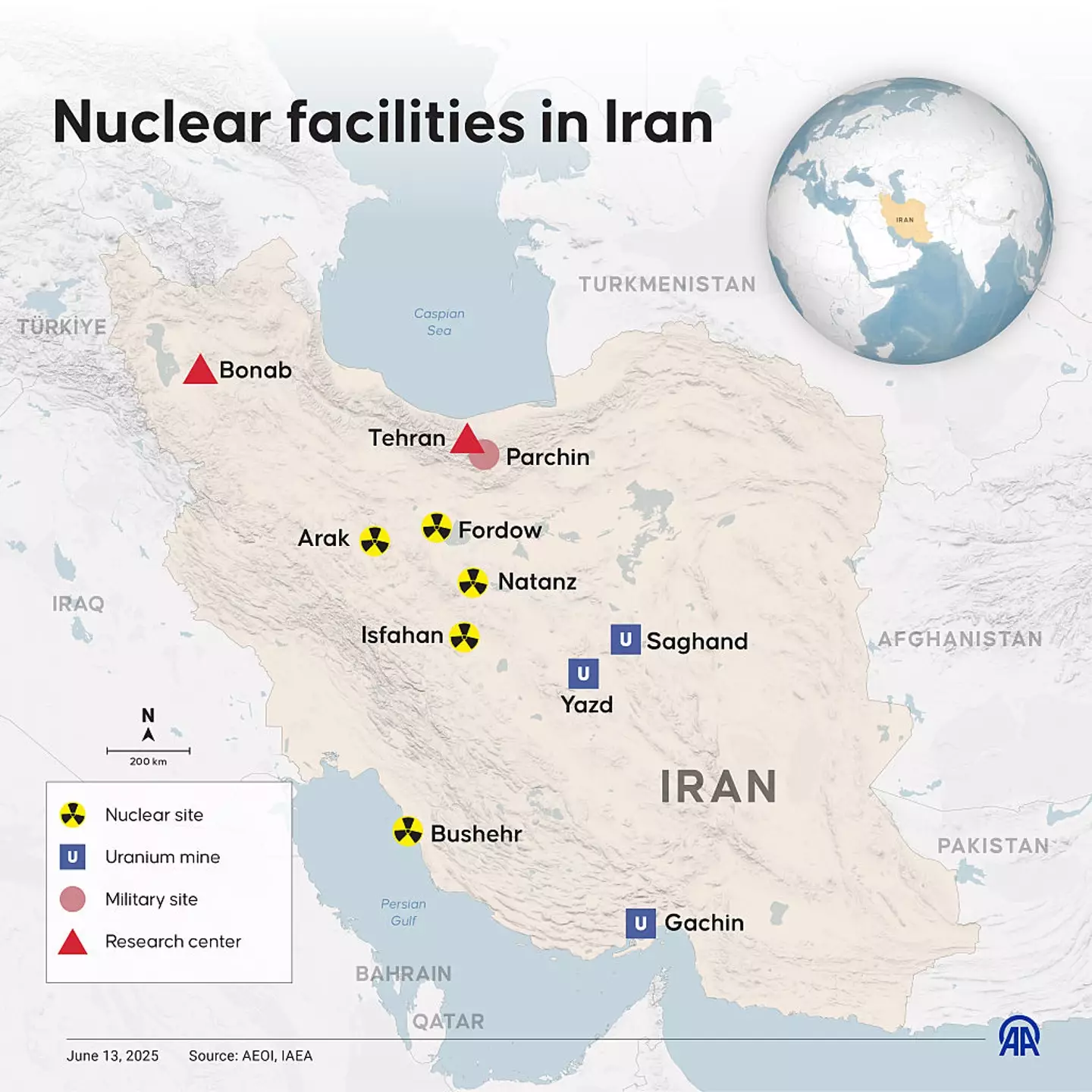

Infographic of where Iran’s nuclear sites are located (Ufuk Celal Guzel/Anadolu via Getty Images)
Why did the US leave the 2015 Iran nuclear deal?
Trump opted the US out of the first deal, known as the Joint Comprehensive Plan of Action (JCPOA) – which was struck in 2015, in May 2018 during his first term as president, labelling it ‘defective at its core’.
The Trump administration then sought to reinstate the sanctions on Iran, a move which the country’s Supreme Leader Ayatollah Ali Khamenei said ‘disgraced’ US prestige and liberal democracy, according to the BBC.
During his presidential campaign in 2016, Trump cited that the agreement failed to address Iran’s development of its ballistic missile programme, as well as the country’s destabilising influence in the region.
Now, upon his return to the White House, Trump issued a batch of sanctions on Iran, this time directed at their’ oil network’, as per Al Jazeera.
Between 2012 and 2016, the Iranian economy lost a total of $160 billion in revenue from its oil supply alone. After Trump reimposed sanctions in 2018, the Iranian rial, its local currency, dropped to a record low.
As mentioned earlier, Iran is currently in a deep recession and has been since the sanctions were put in place.


Trump opted the US out of the Joint Comprehensive Plan of Action back in 2018 (Yuri Gripas/Abaca/Bloomberg via Getty Images)
Why is Israel involved?
Israel’s attack in the early hours of this morning came as tensions escalated over Iran’s rapidly advancing nuclear programme, with Israeli Prime Minister Benjamin Netanyahu saying that the strikes were ‘a targeted military operation to roll back the Iranian threat to Israel’s very survival’.
Israel said it hit ‘dozens of military targets, including nuclear targets in different areas of Iran’, killing Iran’s top military and nuclear scientists (via the BBC).
However, it was just the latest of a series of hostilities that the two nations have exchanged in recent years.
In 2018, Prime Minister Benjamin Netanyahu announced that Israel obtained tens of thousands of pages of data showing Iran covered up its nuclear program before signing a deal with world powers in 2015.
Two years later, a top Iranian military nuclear scientist, Mohsen Fakhrizadeh, was assassinated by a remote-controlled machine gun while traveling in a car outside Tehran – with a top Iranian security official accusing Israel of killing the scientist, who founded Iran’s military nuclear programme in the 2000s.
Their relationship has since worsened due to Israel’s war with Hamas – and the humanitarian crisis that is ongoing in the Gaza Strip.
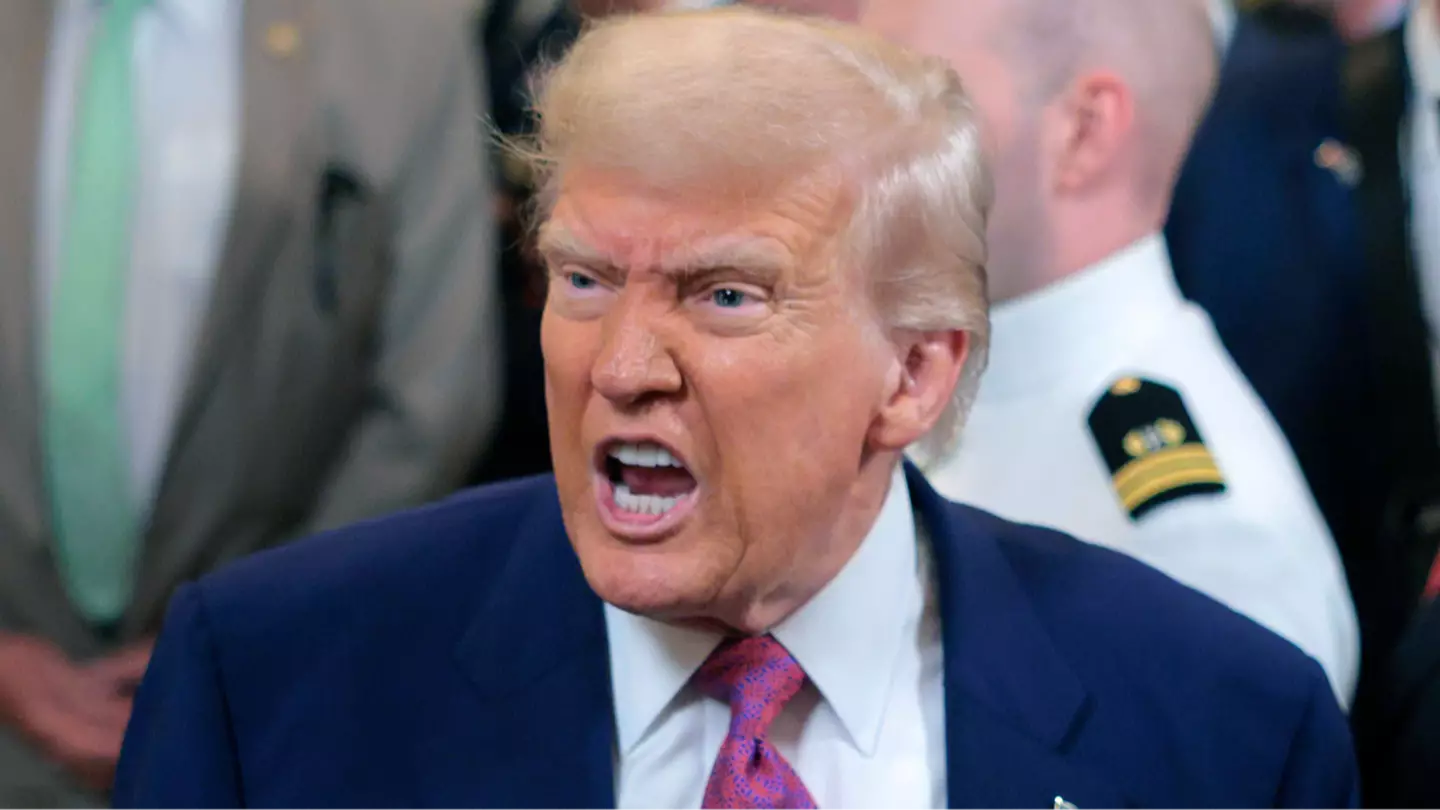

President Donald Trump has described the bombing of Iran from Israel as a ‘very successful attack’ as he urges them to ‘make a deal’.
The 78-year-old has been pushing for the Middle Eastern country to sign a nuclear deal with the group of world powers known as the P5+1 – which includes the US, UK, Germany, France, China and Russia, who’ve all been in negotiation with Iran in regards to its nuclear program since 2006.
For those unaware, the deal was for Iran to bring to a halt its nuclear development program – with world leaders worried that the country intends to create a nuclear artillery for warfare. In return for Iran axing the program, the US and other leading nations would lift the sanctions placed on Iran.
The agreement is similar to the first deal, known as the Joint Comprehensive Plan of Action (JCPOA), struck in 2015. However, Trump opted the US out of it in May 2018 during his first term as president, labelling it ‘defective at its core’.
The Trump administration then sought to reinstate the sanctions on Iran, a move which the country’s Supreme Leader Ayatollah Ali Khamenei said ‘disgraced’ US prestige and liberal democracy, according to the BBC.
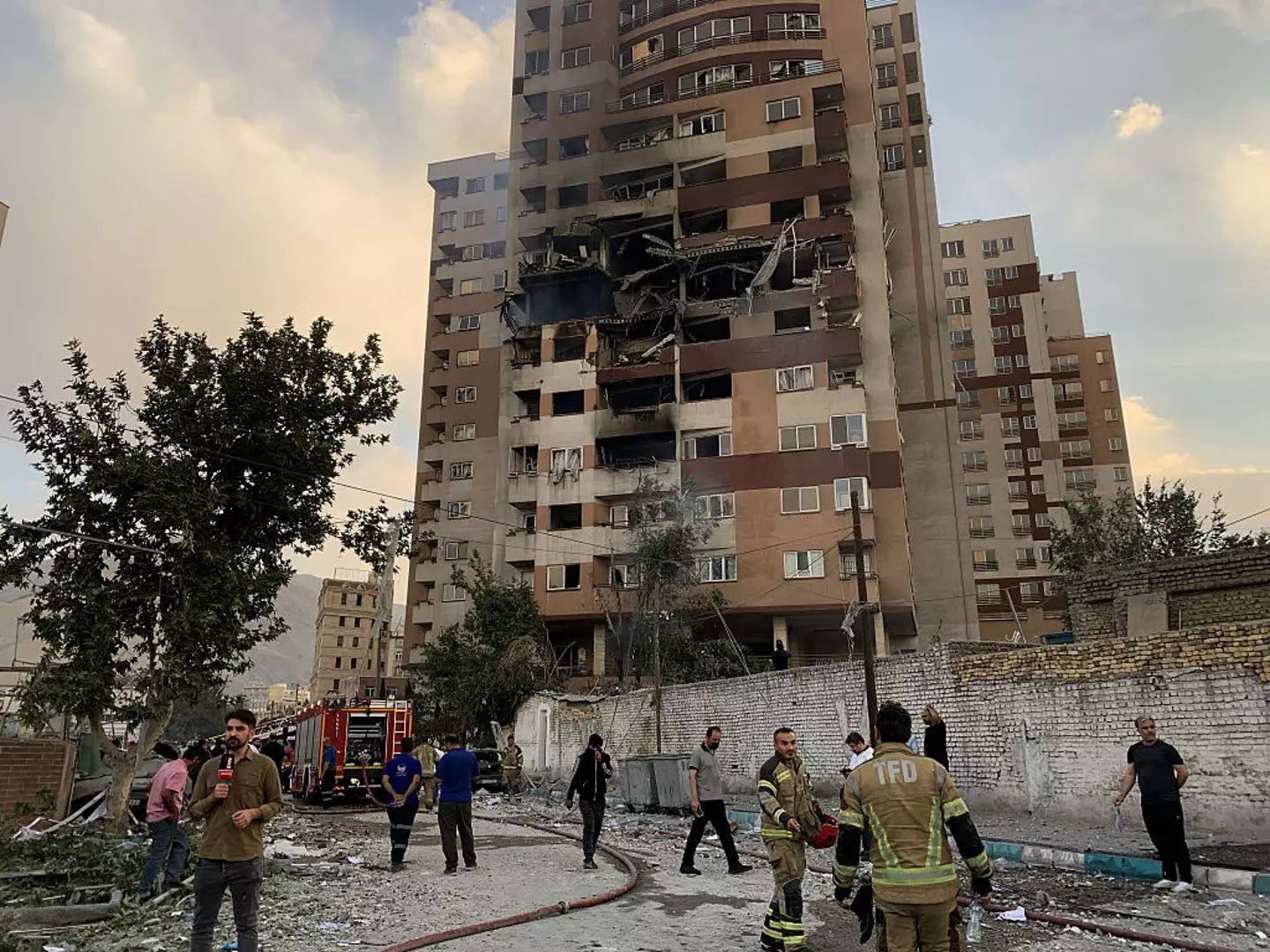

A view of a damaged building in the Iranian capital, Tehran, following an attack, on June 13, 2025. Israeli Defense Minister Israel Katz has announced that Israel conducted strikes on Iran (Fatemeh Bahrami/Anadolu via Getty Images
Upon his return to the White House, Trump issued a batch of sanctions on Iran, this time directed at their’ oil network’, as per Al Jazeera.
Between 2012 and 2016, the Iranian economy lost a total of $160 billion in revenue from its oil supply alone. After Trump reimposed sanctions in 2018, the Iranian rial, its local currency, dropped to a record low.
Iran is currently in a deep recession and has been since the sanctions were put in place.
“I gave Iran chance after chance to make a deal. I told them, in the strongest of words, to ‘just do it,’ but no matter how hard they tried, no matter how close they got, they just couldn’t get it done,” the Republican wrote on Truth Social.
“I told them it would be much worse than anything they know, anticipated, or were told, that the United States makes the best and most lethal military equipment anywhere in the World, BY FAR, and that Israel has a lot of it, with much more to come – And they know how to use it.”
Since then, Israel launched a major attack in the early hours of this morning (June 13) that set off explosions in the Iranian capital Tehran.
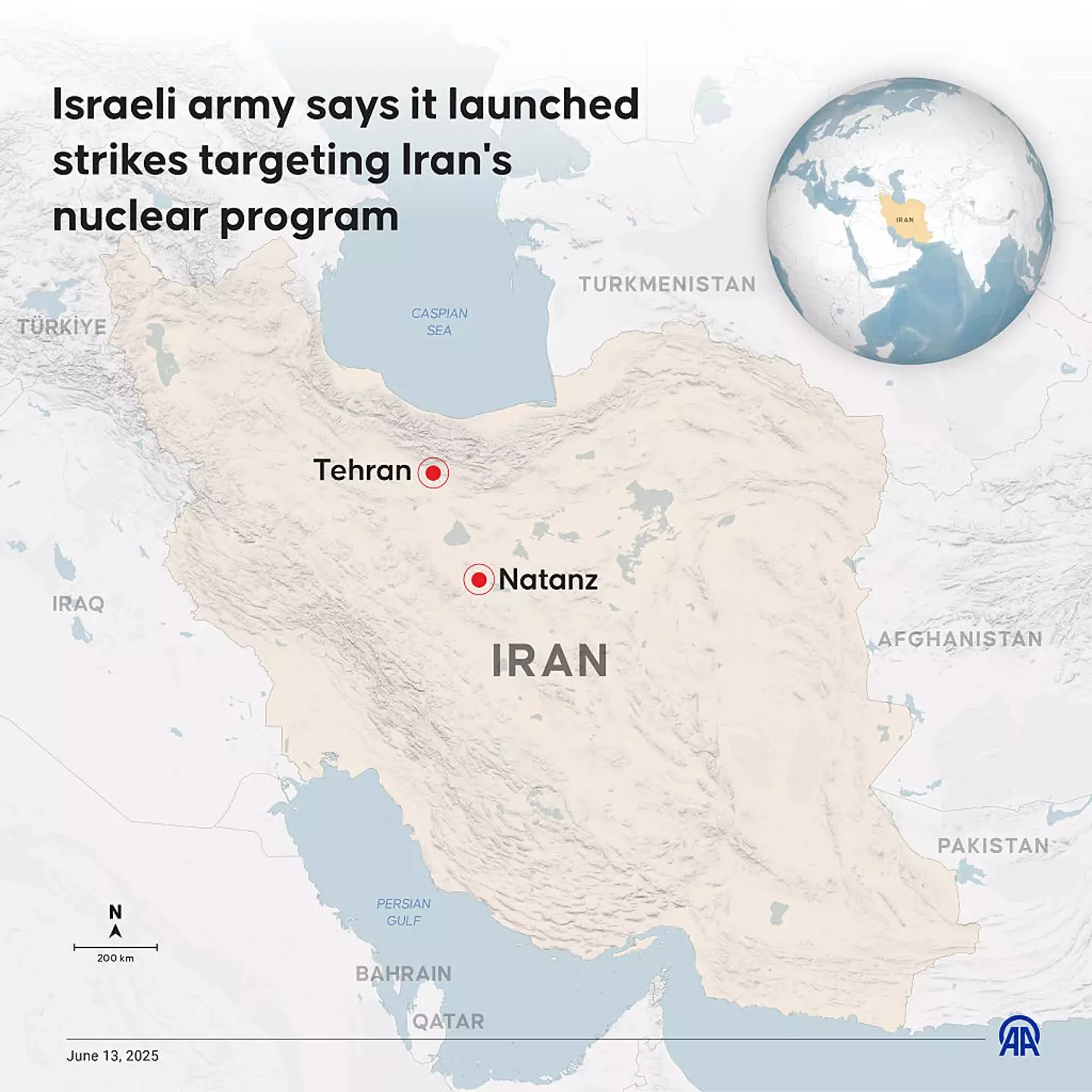

Israeli army says it launched strikes targeting Iran’s nuclear program (Yilmaz Yucel/Anadolu via Getty Images)
Israel said it hit ‘dozens of military targets, including nuclear targets in different areas of Iran’, killing Iran’s top military and nuclear scientists (via the BBC).
Israel’s attack comes as tensions have escalated over Iran’s rapidly advancing nuclear programme, with Israeli Prime Minister Benjamin Netanyahu saying that the strikes were ‘a targeted military operation to roll back the Iranian threat to Israel’s very survival’.
Trump’s post continued: “Certain Iranian hardliner’s spoke bravely, but they didn’t know what was about to happen. They are all DEAD now, and it will only get worse!
“There has already been great death and destruction, but there is still time to make this slaughter, with the next already planned attacks being even more brutal, come to an end.
“Iran must make a deal, before there is nothing left, and save what was once known as the Iranian Empire. No more death, no more destruction, JUST DO IT, BEFORE IT IS TOO LATE. God Bless You All!”
He later added: “Two months ago I gave Iran a 60 day ultimatum to ‘make a deal.’ They should have done it! Today is day 61. I told them what to do, but they just couldn’t get there. Now they have, perhaps, a second chance!”
He also told CNN that the strikes were a ‘very successful attack’, adding that the US ‘supports Israel’.
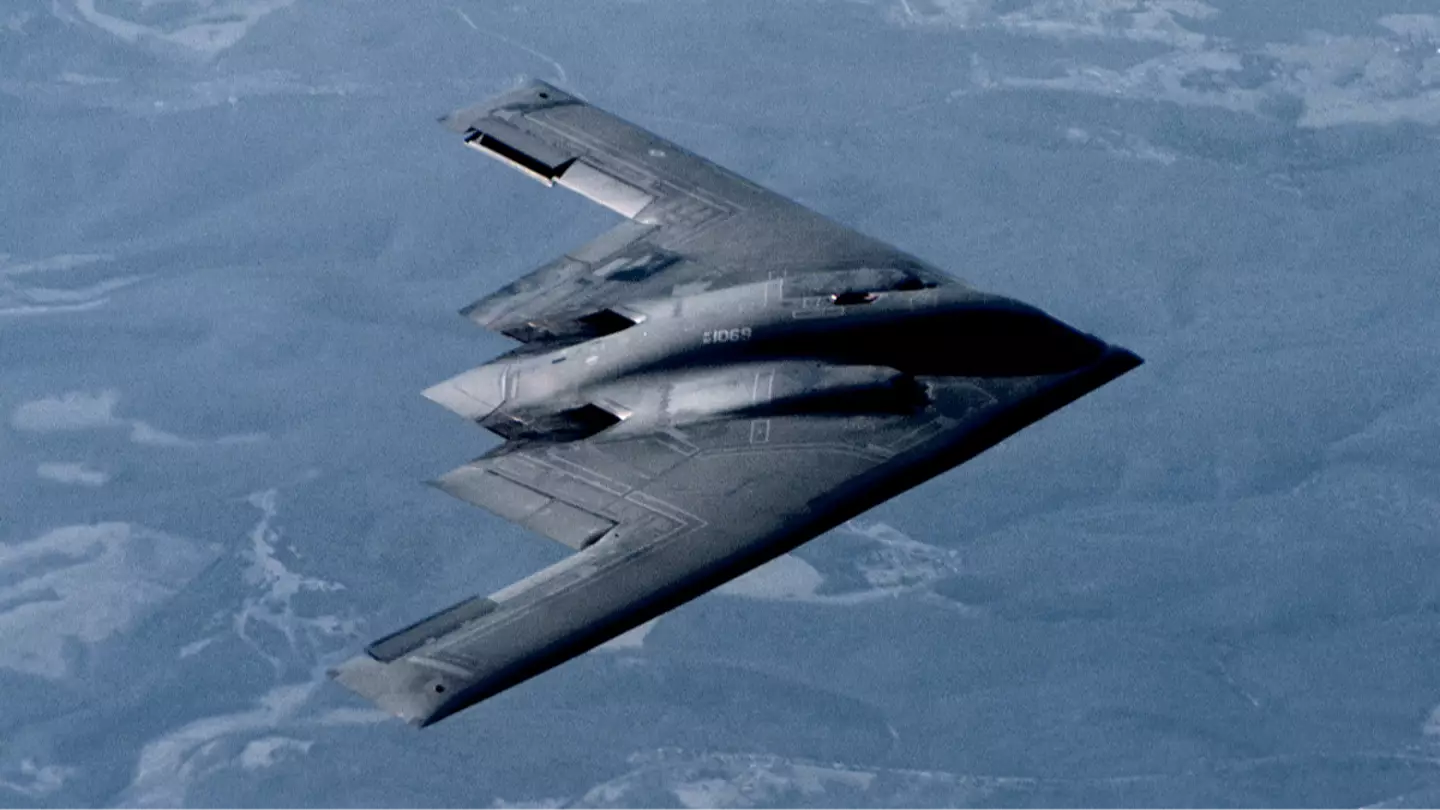

As tensions between the US and Iran intensify, three US stealth bombers have taken off from America to head to a military base 3,000 miles from the Middle Eastern country.
President Donald Trump has been vocal about the issue and has came out in support for Israel, after it launched a large-scale attack on Iran – targeting several of the nation’s nuclear facilities – on Friday last week (June 13).
World leaders are becoming increasingly more concerned that Iran is developing nuclear weapons, and so too has Trump – who has distanced himself from any involvement in the assault, while also threatening to have Iranian Supreme Leader Ali Khamenei killed.
Posting on Truth Social on Tuesday: “We know exactly where the so-called ‘Supreme Leader’ is hiding. He is an easy target, but is safe there – We are not going to take him out (kill!), at least not for now.
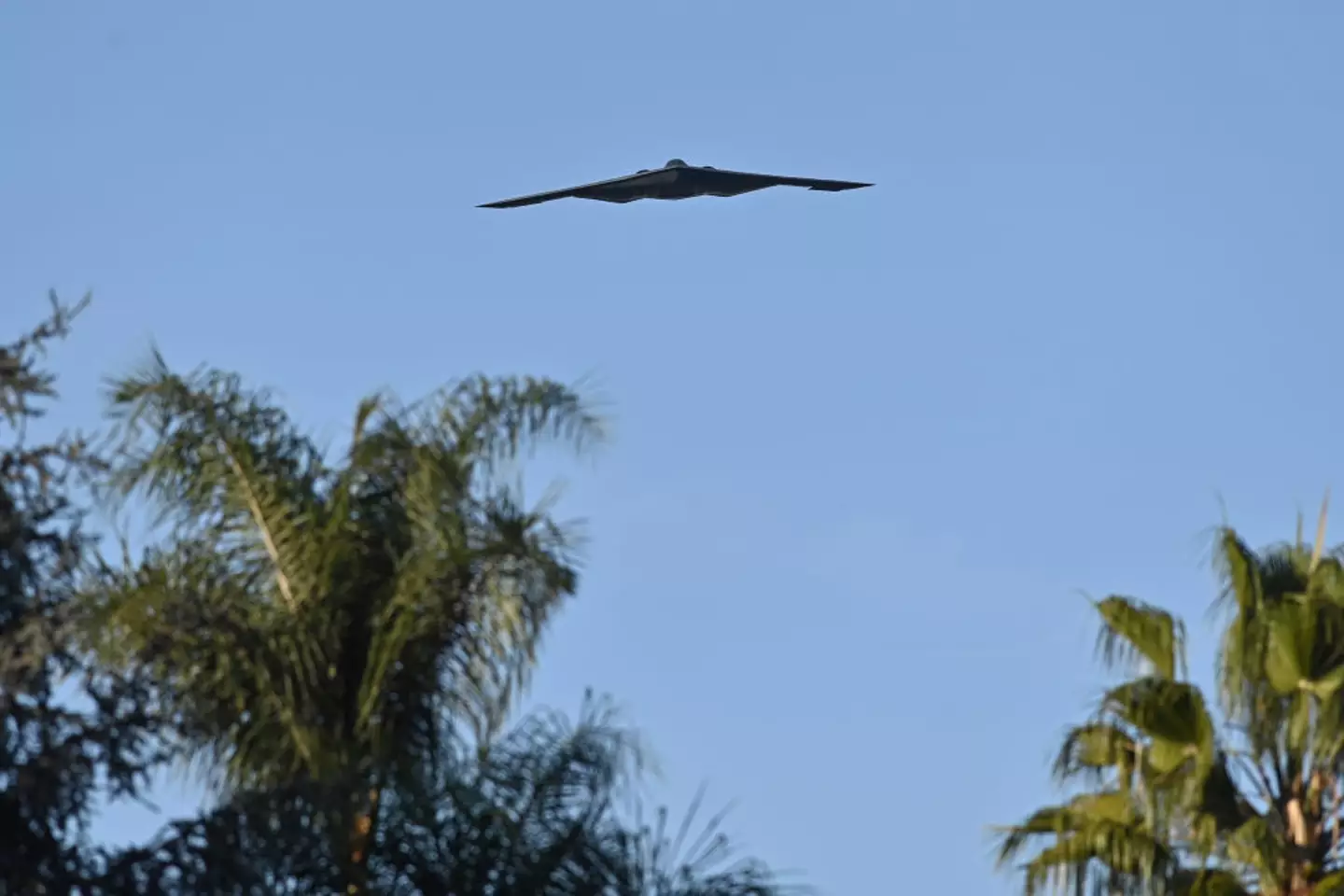

Three B-2 ‘Spirit’ Stealth Bomber, pictured flying over Pasadena in California back in January, have been deployed to a military base near to Iran (Jerod Harris/Getty Images)
“But we don’t want missiles shot at civilians, or American soldiers. Our patience is wearing thin. Thank you for your attention to this matter!”
America’s involvement in the conflict in the Middle East could soon escalate after three stealth bombers were seen jetting off to Diego Garcia, a small island in the Indian Ocean that is used as a military base by the UK and US.
As for whether Trump will order an attack soon remains to be seen, having said on Thursday that he will make that decision ‘in the next two weeks’.
But everyone is pointing out the same thing over on Twitter, after footage was taken of the stealth bombers.
One person typed: “How is it stealth and invisible if random people see them and post on X?”
“‘Stealth’ meanwhile the whole world knows,” a second added.
Another wrote: “Thats not very stealthy if everyone knows about it now…”
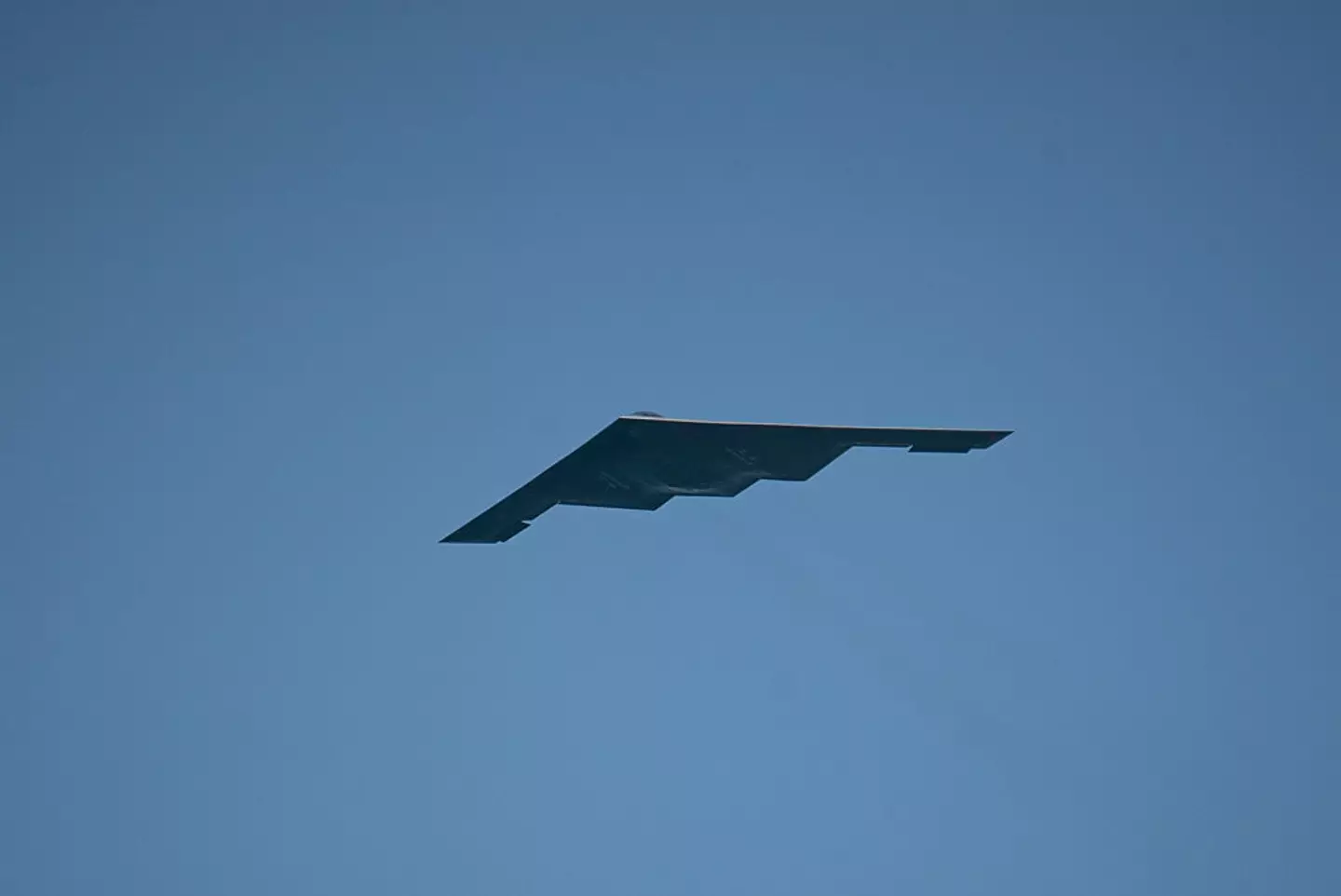

The stealth bombers could be used to bomb Iran’s nuclear sites (Jesus Olarte/Anadolu via Getty Images)
Yes – everyone is saying the same thing, these stealth bombers aren’t very stealthy!
“The key to stealth is nobody knowing it’s happening,” someone else input.
“Not so stealth if ya report it haha,” typed another.
Meanwhile, one user asked Twitter’s AI chatbot Grok to explain whether the US had already deployed B-2s to the Middle East already.
It replied: “No evidence suggests U.S. B-2 stealth bombers were stationed in the Middle East as of June 21, 2025. Reports indicate B-2s were deployed to Diego Garcia in the Indian Ocean, not the Middle East, since March 2025 for regional operations.
“No B-2s were based at Middle Eastern airfields like Al Udeid or RAF Akrotiri. Three B-2s are currently en route to Guam, a separate deployment.”
Iran and weapons-grade uranium
Iran has been accused of attempting to develop a nuclear warhead, mining large quantities of uranium before enriching it to 60 percent – with Iran having no purpose to enrich the material to such a high percentage.
For those unaware, natural uranium contains a percentage of roughly 0.7 percent of the isotope uranium-235, which on its own isn’t usable as fuel for nuclear reactors – and needs to be enriched to 3.5 percent by removing the isotope uranium-238.
However, as previously mentioned, Iran has been producing and storing enriched uranium at 60 percent on mass – which would mean they’ve done most of the work needed to enrich it to weapon-grade uranium (WGU), which is typically deemed at 90 percent.
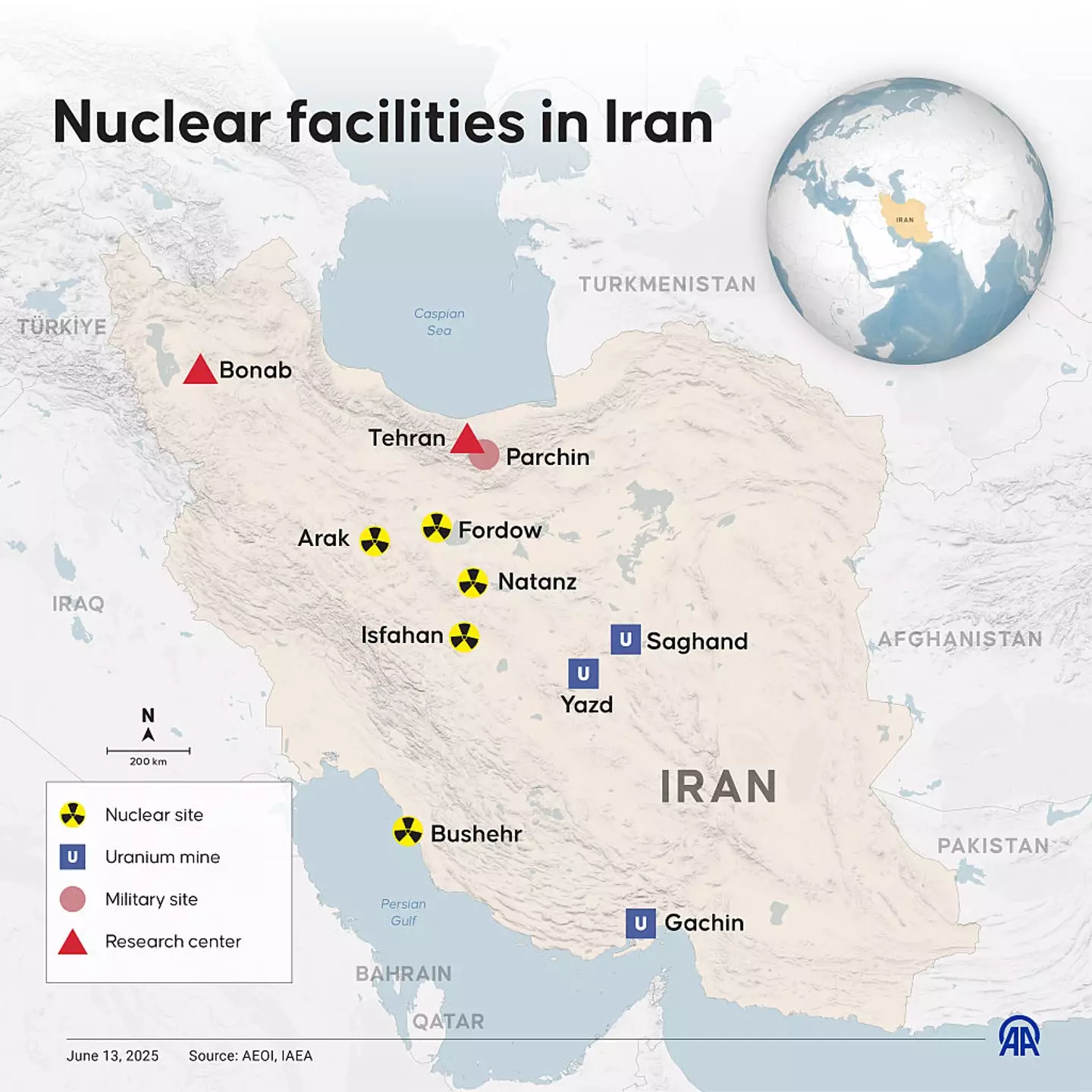

Infographic of where Iran’s nuclear sites are located (Ufuk Celal Guzel/Anadolu via Getty Images)
How close is Iran to a nuclear weapon?
The Institute for Science and International Security, a non-profit watchdog, estimates that it has enough highly enriched uranium that it could create almost a dozen nuclear bombs in a month – if the uranium was enriched to 90 percent.
Its monitoring report issued on Monday (June 9) stated that one of Iran’s factories could produce weapons-grade uranium (WGU) in just days.
Chillingly, it read: “Iran could produce its first quantity of 25 kg of WGU in Fordow in as little as two to three days.
“Breaking out in both Fordow and the Natanz Fuel Enrichment Plant (FEP), the two facilities together could produce enough WGU for 11 nuclear weapons in the first month, enough for 15 nuclear weapons by the end of the second month, 19 by the end of the third month, 21 by the end of the fourth month, and 22 by the end of the fifth month.”
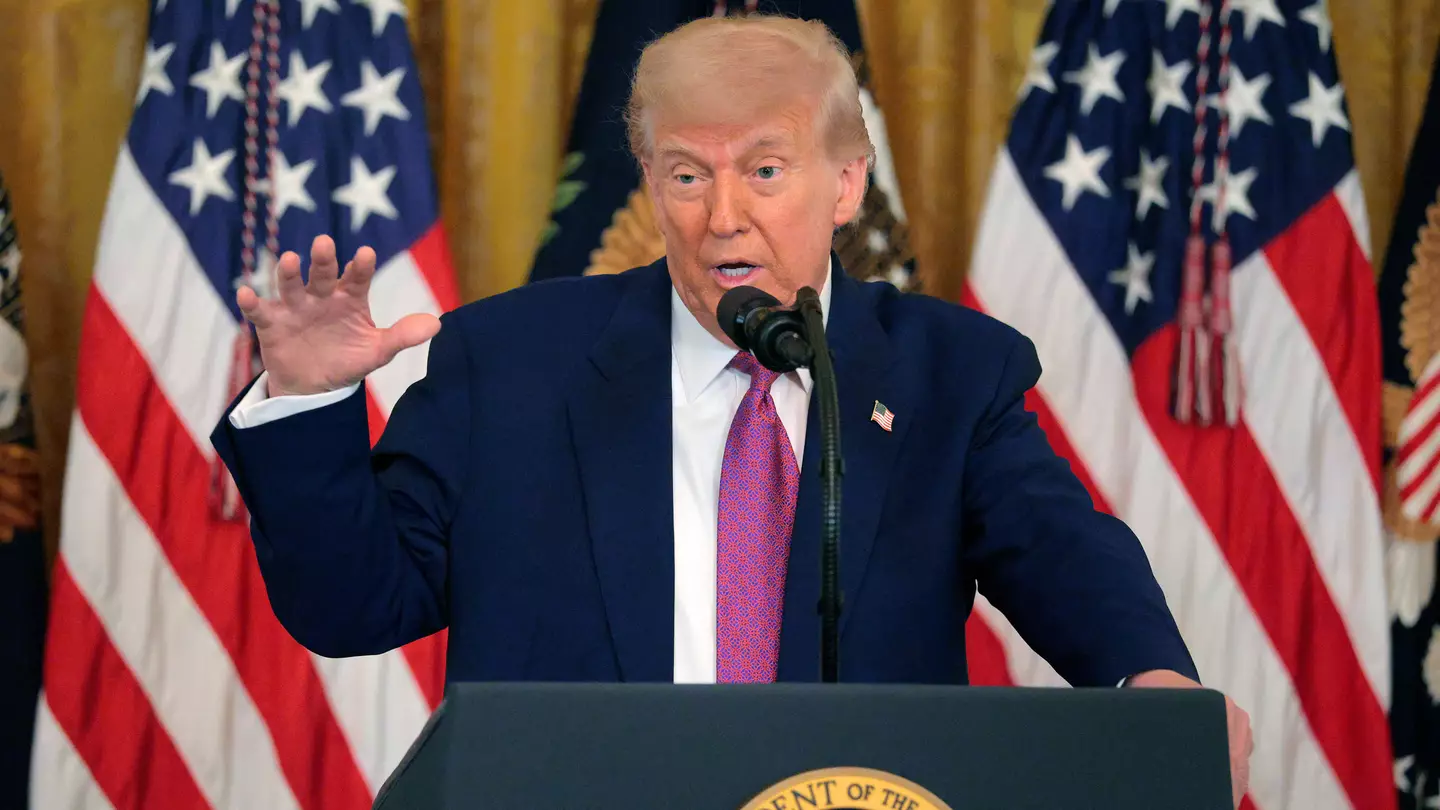

President Donald Trump has called for ‘unconditional surrender’ from Iran’s Supreme Leader Ali Khamenei in a bizarre statement as the conflict in the Middle East rages on.
The 79-year-old has claimed that the US is in ‘total control’ of the sky above Iran, as worries mount that the nation could be just days away from creating a nuclear weapon.
Today (June 17) marks the fifth day of airstrikes being exchanged between Israel and Iran, with the former having launched a large-scale drone assault on nuclear sites throughout the latter’s country.
Israel targeted three key nuclear facilities – Natanz, Isfahan and Fordow – with satellite images suggesting the former two locations have been badly damaged.
On Friday, Israeli Prime Minister Benjamin Netanyahu said that the strikes were ‘a targeted military operation to roll back the Iranian threat to Israel’s very survival’.
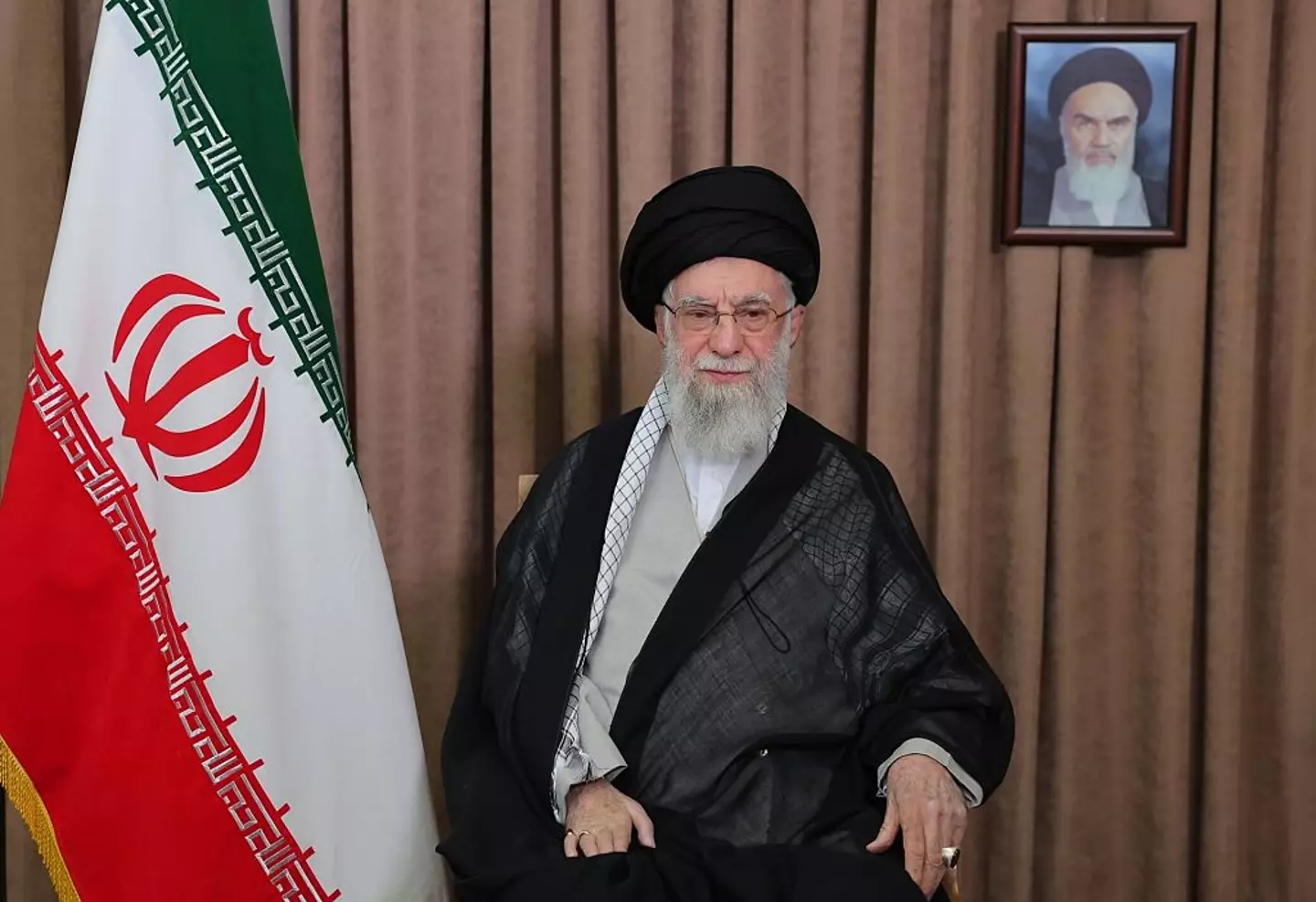

Iranian Supreme Leader Ali Khamenei is reportedly in hiding, according to Trump (Iranian Leader Press Office / Handout/Anadolu via Getty Images)
Now, President Trump has taken to Truth Social to make a series of bizarre statements, suggesting that the US could intervene if Iran revealed a nuclear bomb.
“We now have complete and total control of the skies over Iran. Iran had good sky trackers and other defensive equipment, and plenty of it, but it doesn’t compare to American made, conceived, and manufactured ‘stuff.’ Nobody does it better than the good ol’ USA,” he wrote today.
Trump’s statement confused many Americans, with one writing on Twitter: “So are we involved now?”
Another said: “There is something I don’t understand, isn’t this war Iran vs Israel?”
Trump later added on Truth Social: “We know exactly where the so-called ‘Supreme Leader’ is hiding. He is an easy target, but is safe there – We are not going to take him out (kill!), at least not for now.
“But we don’t want missiles shot at civilians, or American soldiers. Our patience is wearing thin. Thank you for your attention to this matter!”
Following up with: “UNCONDITIONAL SURRENDER!”
His powerful statements come despite the Republican insisting that the US is not involved in the conflict.
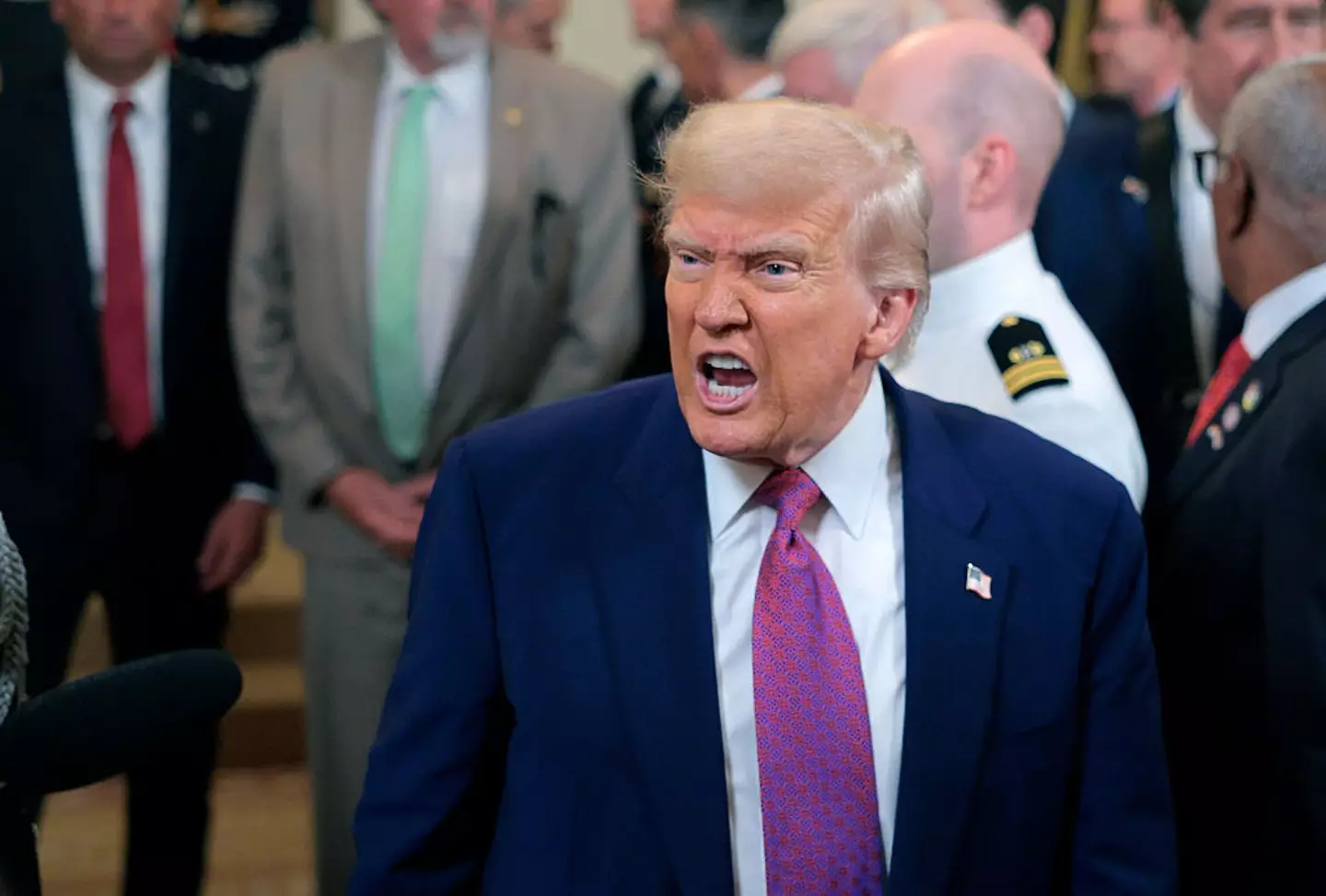

President Donald Trump has issued a scathing, yet bizarre, message about the Supreme Leader of Iran on Truth Social (Chip Somodevilla/Getty Images)
Iran and weapons-grade uranium
Iran has been accused of attempting to develop a nuclear warhead, mining large quantities of uranium before enriching it to 60 percent – with Iran having no purpose to enrich the material to such a high percentage.
For those unaware, natural uranium contains a percentage of roughly 0.7 percent of the isotope uranium-235, which on its own isn’t usable as fuel for nuclear reactors – and needs to be enriched to 3.5 percent by removing the isotope uranium-238.
However, as previously mentioned, Iran has been producing and storing enriched uranium at 60 percent on mass – which would mean they’ve done most of the work needed to enrich it to weapon-grade uranium (WGU), which is typically deemed at 90 percent.
